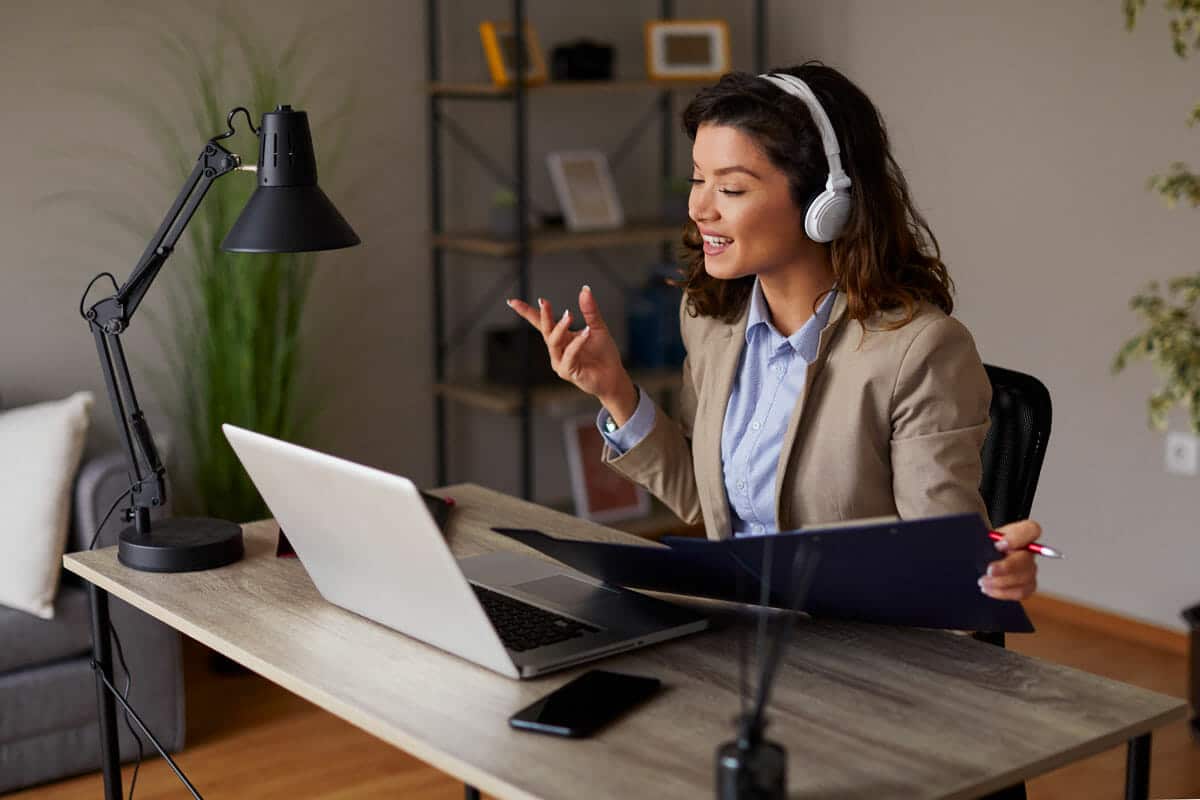Audio quality is arguably the most critical aspect of video and online conference calls. Clear, reliable audio is imperative for effective teleconferencing. Yet, research suggests that up to 95% of audio end-users and decision-makers experience sound-related problems that negatively affect their concentration or efficiency at work, leading to costs in time, productivity, and business for your company. You can quickly mitigate sound problems by conducting a simple noise audit and making changes to increase sound quality.
Regardless of where you work, in a small at-home office, a conference room, or a large office, you need to focus on three things when focusing on sound design for your office space:
- Sound masking
- Sound absorption
- Microphone and speaker
Focusing on these three essential parts of audio quality can help you reduce noise pollution, cancel out noisy distractions, and increase productivity and positivity at work. The following are ideas for creating a sound-proof conference room as well as at-home solutions.
Do a Noise “Audit”
Conducting a noise audit is the first step to noise reduction and increased sound quality. Schedule a time with a trusted coworker for a video call to find out how your audio sounds on the other end. Ask for honest feedback. You can use the following questions as a guideline for evaluation:
- Can I be clearly understood?
- What background noises can be discerned?
- Is there any echoing or hollow sounds when I talk?
- Is there anything else that disrupts the audio quality on your end?
After receiving their feedback, take time to locate potential noise sources. Common noise sources include:
- Loud coworkers, customers, or children in an adjacent space
- Outside traffic and noise
- Poor acoustics
- Noisy computer fans, and more
Make a list of areas in your room that are potential issues, such as high traffic areas, windows, ceiling tiles, and hard surfaces, like a concrete or wood floor, glass walls, whiteboards, or large screens. Correctly determining the problem areas will lead to executing more effective solutions.
Sound Masking: Keep Outside Noises Out
Next, decide how to best address the problem areas you identified. One common struggle is keeping outside noises out. Sound masking is an effective solution to this. It helps produce a soundproof conference room or office by adding specific frequencies to an environment through a sound masking system. It raises the ambient noise enough to keep you from becoming distracted from unexpected sounds. Think of it as a sophisticated white noise machine that can diminish noise distractions, protect speech privacy, boost productivity, and balance acoustics for a comfortable work environment. Some refer to it as a noise-canceling conference room, but sound masking can be applied in both small-scale and large-scale offices.
Some sound transmission through walls or ceilings is inevitable but can be mitigated. In offices where ceiling tiles are standard, a lot of sounds come in through the ceiling. Replacing tiles with acoustic ceiling tiles will help reduce noise. You can also achieve conference room sound dampening by soundproof drywall or soundproofing curtains made with heavy vinyl known as mass-loaded vinyl (MLV), which blocks and contains sound.
Sound Absorption: Reduce Noise Reflection Inside the Room
Sound absorption aims to trap and reduce noise bouncing off materials in meeting rooms in order to reduce echoes and reverberations that make speech difficult to hear and understand. If you want to know how to reduce sound reflection in a room, you need to pay attention to the number of hard surfaces in an area. Hard surfaces such as concrete or wood floors, glass walls, and open, unfurnished spaces create more opportunities for sound to bounce off and travel, making it harder to hear or understand.
Sound absorption lessens the amount of sound being bounced around. Consider installing one or more sound absorbers in your space to lower the noise. Sound absorbers include, but are not limited to:
- Rugs or carpet
- Wall hangings
- Plants
- Acoustic panels
- Acoustic ceiling tiles
- Acoustic partitions
- Acoustic foam
- Drapes and acoustic curtains
If you are soundproofing an open space, it gets trickier. You can use a combination of sound masking and sound-absorbing techniques for blocking sounds, such as rugs, partitions, and white noise. Then, you can make sure you have good headphones and a microphone when you tie into your call.
The Speaker: Master the Microphone
Along with making necessary soundproofing changes, you also want to make sure that your AV system is high quality and functional. Using up-to-date, high-quality, and highly rated products helps with sound quality. Also, recognize that problems with bandwidth, multiple audio sources, and even a failure of coworkers to mute when they are not actively talking or presenting can all negatively affect sound quality.
Test out the best position for your microphone and adjust accordingly. Sound quality increases when your microphone clearly picks up your voice while not magnifying any surrounding noises and distractions.
Call in the Pros: We Can Deliver Crystal Clear Audio for Your Next Video Conference
At Marshall Industries, we specialize in top-of-the-line, high-performance audiovisual systems and sound masking techniques to deliver the office space that is right for you. Our systems reduce noise distraction, increase speech privacy, improve productivity, enhance office acoustics, and seamlessly integrate into your established routines and expectations using simple interfaces and total control. Whether you work in an office or from home, we provide the materials and expertise to bring your conference calls to the next level.
We have been in business for over 45 years and have grown from a small family company with four employees to more than 100 workers serving clients in Utah and Idaho. Learn more about Commercial AV Systems or contact us today and let us help you with any of your audio needs.




